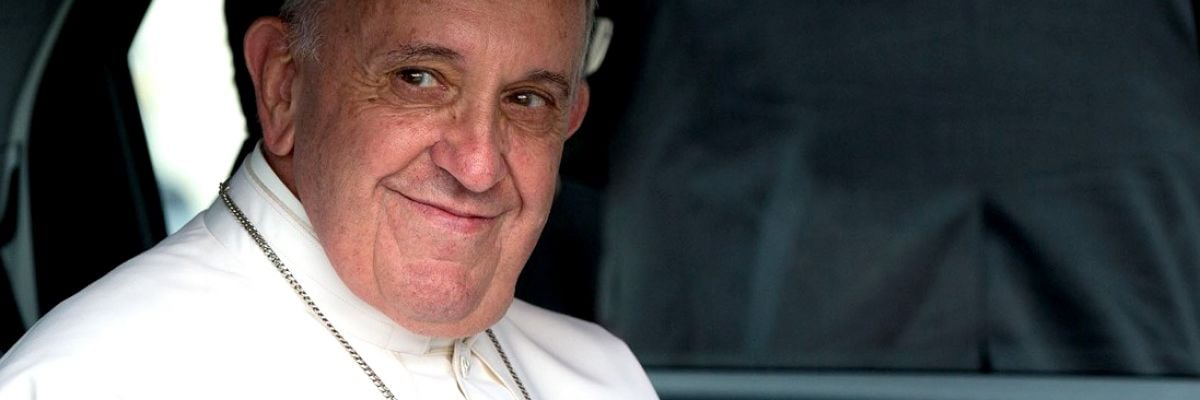
If you heard a sonic boom in the last twenty-four hours or so, it was likely from the shock waves created by high-speed news reports on Pope Francis agreeing to create a special commission to examine the possibility of “women deacons” in the Church.
But if you’ve been there and done that (and even have the T-shirt), you already know that the high-speed prose that gives the secular media heart palpitations usually comes crashing back down to Earth in the form of a serious reality check. And that’s right where we are with “women deacons.”
So, as briefly as possible, before looking at what the Pope really said, here are a few points to help us all navigate this more clearly.
Know the terms
In discussion or in anything you may read, always question the terms used, and make sure they are used correctly. Examples:
Woman deacon: A term most often used to blur the crucial historical distinction between the sacred diaconate (the first degree of holy orders) and the minor order of “deaconess,” an order comprising Christian women that was distinct from the all-male diaconate.
Ordained: It’s okay to not argue about whether women were ever “ordained”—they were ordained—but to the minor order of deaconesses. Men also were “ordained” to minor orders that never were part of the sacrament of holy orders. Don’t be distracted by ordained/not-ordained arguments.
Clergy: Similarly, it’s okay to concede that deaconesses were counted among the “clergy” in times past, since the minor orders in general were counted as “clerical” at that time. But being a cleric did not mean (at that time) “having received the sacrament of holy orders.”
History is silent
Anyone who claims that both deaconesses and deacons participated in the sacrament of holy orders will have to explain just why there is no historical record of lectoresses, porteresses, acolytesses, etc. Women who became deaconesses never had to do what men had to do prior to ordination to the sacred diaconate—namely, progress through the above minor orders first.
Anyone who thinks having “women deacons” is a matter of justice for women in the Church might first want to pay attention to the fact that two other all-male ministries remain in the Church: the instituted acolyte and the instituted reader. One might wonder why these two essential liturgical ministries are almost always overlooked in this context. Maybe it is because they no longer count as receiving “ordination” and no longer count as being a member of the clergy. The end game here for advocates of “women deacons” seems to be to cast women in the position of “ordained clerics” rather than to pursue this as a justice issue.
Only deacons are of apostolic origin
The sacred diaconate is of indisputable apostolic origin. The order of deaconesses is not.The New Testament makes this quite clear—the Apostles themselves (Acts 6) appointed the first seven deacons—all of them males.
The New Testament example of Phoebe is not a smoking gun for “women deacons.” Phoebe is mentioned in Romans 16:1 as a diakonos (Greek) of the Church at Cenchreae. But so what? There was no Greek word for deaconess at that time (that would be coined later), and there is no reason to translate diakonos here as meaning “member of clergy and recipient of sacrament of holy orders.” The diakonos serving at the wedding feast at Cana in Galilee in John 2 weren’t ordained clerics, were they?
The pope gets it
So, Catholic News Service reports today that Pope Francis agreed, in a question-and-answer session with the heads of women religious orders, to set up a commission to study whether women could be admitted to the diaconate. The CNS article says:
Asked about deaconesses in the New Testament and the possibility of the modern church admitting women to the permanent diaconate, Pope Francis had said his understanding was that the women described as deaconesses in the Bible were not ordained like permanent deacons are. Mainly, he said, it appeared that they assisted with the baptism by immersion of other women and with the anointing of women.
However, he said, ‘I will ask the (Congregation for the) Doctrine of the Faith to tell me if there are studies on this.’”
Unfortunately not every media source is making clear that Pope Francis himself already has an understanding of this question: namely, he says he has the same understanding the Church has had for all its history, which is that early-Church deaconesses were not simply “female deacons.”
The prefect of the CDF gets it too
Not only that, but when he says he will ask the Congregation for the Doctrine of the Faith about studies on this, the prefect of that congregation, Cardinal Gerhard Müeller, will be able to share with Pope Francis his own work on the subject, found in Priesthood and Diaconate,* in which Mueller also concludes there is a supreme distinction between deaconesses and deacons. In addition, Mueller will likely cite the 2002 study done by the Curia’s own International Theological Commission, From the Diakonia of Christ to the Diakonia of the Apostles, which also concluded that the deaconesses of history “were not purely and simply equivalent to the deacons.”
Now, at this point, we can take a wait-and-see attitude regarding the possibility of another study commission. The facts are clear and are not going to change simply because another group might study them a mere fourteen years after the last group did. And I sincerely doubt that a new commission will be able to conclude that women can receive one degree of the sacrament of holy orders—as deacons—while not being permitted to receive the other degrees of that sacrament as priests and bishops.
Do you hear that post-sonic-boom thud? Yep—welcome back to planet Earth.
___________________________________________
*Note: In addition to these sources, I recommend Aime Martimort’s great work Deaconesses. I would not recommend, however, the flawed thinking found in Women Deacons: Past, Present, and Future by Gary Macy, William T. Ditewig, and Phyllis Zagano.



